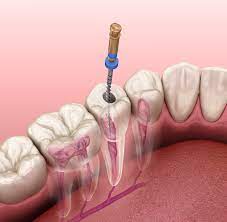Does Root Canal Treatment Work?
I regularly hear patients say, "My neighbor says to not get a root waterway, since he's had three of them and every one of those teeth have been pulled. Accomplish root channels work?" Although root waterway disappointment is a reality, it happens more regularly than it ought to. Whenever a root trench disappointment is available, root waterway retreatment can regularly take care of the issue. This article talks about five motivations behind why root trenches fall flat, and how looking for beginning root canal treatment in dubai from an endodontist can lessen the gamble of root channel disappointment.
Albeit beginning root trench treatment ought to have a triumph rate somewhere in the range of 85% and 97%, contingent upon the situation, around 30% of my work as an endodontist comprises of re-trying a faltering root waterway that was finished by another person. They frequently fizzle for the accompanying five reasons:
1. Missed Canals
The most widely recognized reason I see for disappointment is untreated life structures as missed channels. Our overall comprehension of tooth life structures should lead the professional to have the option to track down every one of the channels. For instance, a few teeth will have two trenches 95% of the time, and that intends that if by some stroke of good luck one waterway is found, then, at that point, the professional better hunt constantly to track down the subsequent channel; not treating a trench for a situation where it is available 95% of the time is simply unsatisfactory.
Most importantly channels ought not be missed in light of the fact that innovation exists that permits us to distinguish and find their presence. Assuming that a specialist is performing endodontic (root trench) treatment, the person needs to have the legitimate gear to treat the full life systems present in a tooth. In spite of the fact that getting a root channel from an endodontist might be somewhat more costly than getting one from an overall dental specialist, there is a more prominent possibility of reserve funds in the drawn out benefit of treating it right the initial time.
2.Not completely Treated Canal
The second most normal explanation that I see disappointment is not completely treated waterways. This generally comes through "being short", intending that assuming a waterway is 23 millimeters in length, its professional just treated 20 millimeters. Being short expands the opportunity of disappointment since it implies that untreated or unfilled space is available, prepared for microbes to colonize and cause contamination.
The second variable that adds to effectively getting a waterway length is insight. There is no substitute to having treated that specific circumstance oftentimes previously. Since endodontists do as such many root channels, they foster a touchy material capacity to feel their direction to the furthest limit of a waterway. They additionally know how to handily open a channel such that will take into account the best achievement. Treatment from an accomplished endodontists incredibly builds the possibilities that the full length of the channel will be dealt with and that disappointment will be decreased.
3. Tissue
The third explanation I see for disappointment is tissue that stayed in the tooth at the hour of the principal root waterway. This tissue goes about as a supplement source to microscopic organisms that can re-contaminate the root trench framework. Root waterways normally have sporadic shapes that our consistently round instruments don't effectively perfect. Two normal motivations behind why tissue is left is absence of legitimate lighting and amplification, which is reachable with a dental working magnifying lens, and that it was done excessively fast.
4. Crack
One more typical justification behind disappointment is root fracture.Although this might influence the root trench treated tooth, it may not be straightforwardly connected with the actual treatment. Breaks in the root permit microorganisms to enter places they shouldn't be. Cracks can happen in teeth that have never had a filling, showing that a large number of them just are not preventable.
Breaks by and large shouldn't be visible on a x-beam (radiograph). In any case, cracks cause a specific example of contamination that should be visible on the radiograph which permits us to distinguish their presence. The cone pillar (CBCT) 3-dimentional imaging framework in our office can show us more prominent radiographic detail that assists us with deciding whether a break is available better than conventional dental radiographs. I have had many situations where I concluded that root waterway treatment or re-treatment wouldn't tackle the issue in light of the fact that the probability of a break was too high to even think about advocating treatment to save the tooth.
5. Spillage
The objectives of root waterway treatment is to eliminate tissue, dispense with microscopic organisms, and seal the framework to forestall re-entry of microorganisms. All dental materials permit spillage of microscopic organisms; we want to restrict the degree of spillage. At some obscure point the equilibrium tips and disease can happen. The more estimates we take to forestall spillage, the more probable achievement will happen. Four estimates that can assist with lessening disappointment because of spillage are elastic dam disconnection, quick long-lasting fillings, hole boundaries, and great correspondence with your overall dental specialist.



Comments
Post a Comment